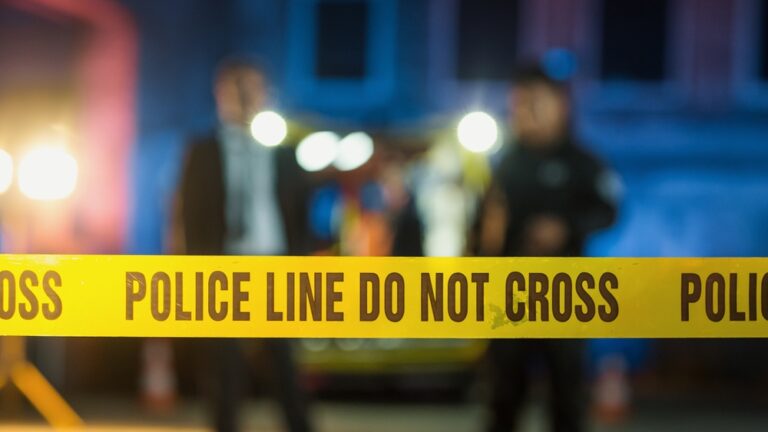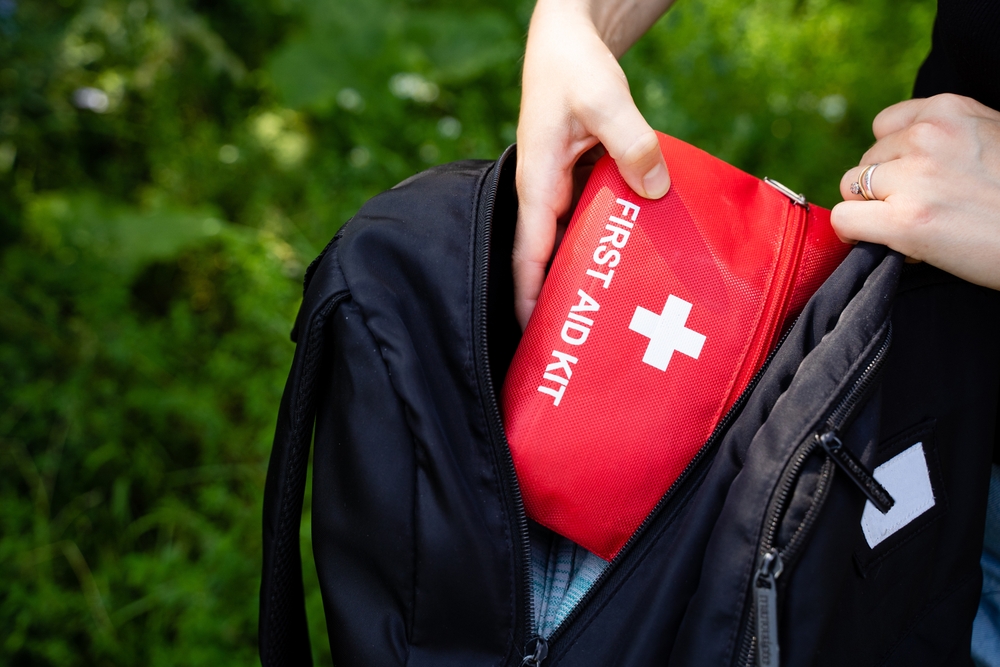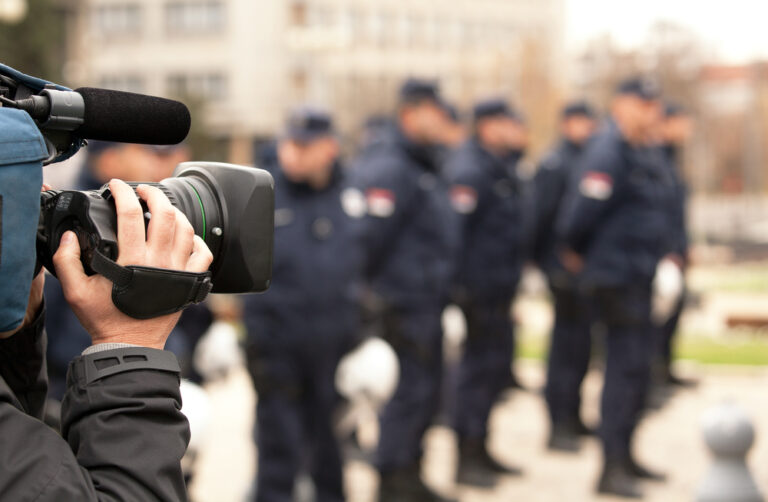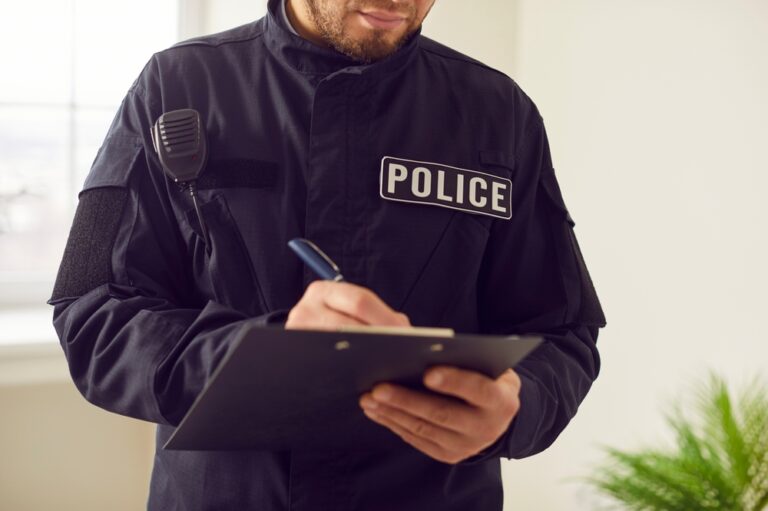
Police Tape 101: Everything You Need to Know
Police tape, commonly known as crime scene tape, is an important tool used by law enforcement to secure…

A law enforcement officer’s most important duty is to save lives. And the best way to perform this duty is with the right training and equipment.
This in-depth guide focuses on first-aid equipment and will teach you what items are most critical for your police first-aid kit.
As a police officer, it’s part of your job to help treat serious injuries. A first-aid kit is crucial because having the correct equipment readily available on your duty belt or mounted to your vest will drastically increase the chance of you saving someone’s life.
That being said, this article is only written to detail the appropriate items for a basic first-aid kit. Learning how to use all of the items requires practice and training that we are not qualified to give at this time.
We do, however, recommend that you attend a first-aid course, if available. Ask your employer about the available courses in your area. A hands-on course using real equipment and actors playing patients is the best option.
Key takeaways:
All of the items inside my kit are hand-picked for the type of injuries I’m most likely to encounter while on duty. Of course, it would be nice to have a CPR machine and defibrillator readily available at all times but we have to be practical. After all, we have to carry a lot of other gear as well.
In my experience, the most common injuries are lacerations with heavy bleeding from car accidents, knife wounds, bullet wounds, or self-inflicted harm. You may also encounter cardiac arrests, suffocation, or severe burns.
Note: I’d like to clarify that I did not personally assemble the following first-aid kit. It was put together by experts in the field who have extensive knowledge on the subject.
So, what should be in a Police first-aid kit?
I have the following items in my first-aid pouch:
As a pouch, I’m using the North American Rescue M-FAK. It’s very compact, lightweight, and fits all of the above-mentioned items.
You’ll find it on Amazon with 5 of the most critical items on my list here.
You will have to add the other items yourself. And yes, they will all fit.
Tourniquet:
This is probably the most important item to have. If used properly, you can effectively stop massive bleeding. Massive bleeding, such as a knife wound to the inner thigh arterial, can result in death within 2-3 minutes. A properly applied tourniquet can restrict blood flow to the leg completely, thus saving a life.
I have a C.A.T tourniquet which you can purchase here.
Or you can buy it in this IPOK (Individual Patrol Officer Kit). You’ll get an ETD, a tourniquet, trauma gloves, and an S-rolled gauze. This bundle is essential and of high quality.
Also, check out Foreverpolice.com’s tourniquet review.
Emergency Trauma Dressing (ETD)
An ETD is a pressure bandage used to stop bleeding. Usually you will apply this to the wound after using a tourniquet. Check this video on youtube for more information on how to use the ETD.
Face Shield Mask for Mouth to Mouth Resuscitation:
This mask is used for mouth-to-mouth resuscitation and will help protect you from infection. Many of the patients we encounter are drug addicts and are at a higher risk of being infected by various diseases.
It also helps prevent a patient’s vomit from entering your mouth. That’s correct, a patient might vomit during mouth-to-mouth resuscitation.
Therefore, a Face Shield Mask is highly recommended for your first-aid kit.
You’ll find it on Amazon.com here.
Trauma Gloves:
These are necessary to protect yourself from infection. Treating a patient will often include coming in contact with their blood. You might even have to stick your fingers into a patient’s wound to stop the bleeding.
You may also be exposed to bacteria and viruses. For all of these reasons and many more, trauma gloves are crucial.
In this IPOK from North American Rescue, you’ll get an ETD, a tourniquet, trauma gloves, and an S-rolled gauze. This bundle is essential and of high quality.
The only downside to these gloves is that they’re black. Lighter colors are usually better to detect blood.
Emergency Thermal Blanket:
A major hurdle is keeping a patient warm. Many of the injuries police officers encounter happen outside where cold conditions can result in hypothermia, especially if a person is injured on the ground.
An emergency thermal blanket will reflect the patient’s body heat, keeping them warm until an EMT arrives. They’re windproof and water resistant as well.
This is a good blanket to add to your police first-aid kit.
Emergency Shears:
To be able to treat patients properly, you often have to remove clothing and shoes. Emergency shears are scissors that can cut through clothing like a knife through butter.
Once, I responded to a traffic accident where two motorcycles had crashed. One of the drivers had an open fracture in their leg. She was dressed in riding gear and motorcycle boots which are made to be especially tough. My emergency shears clipped through her boots in mere seconds, making the treatment a lot less painful.
It’s the quickest way to remove clothing from a patient when each second counts. I use the shears from North American Rescue. You’ll find them here on Amazon.
Compressed Gauze:
This is for stuffing into large wounds to stop bleeding, ideally after you’ve applied a tourniquet. It has many other uses as well.
In the already mentioned IPOK from North American Rescue, you’ll get a compressed gauze as well as a tourniquet, trauma gloves, and an EDT.
Nasal Tube (Nasopharyngeal) and Lubricant for the nasal tube:
The nasal tube is used for keeping the airways open. It’s a good alternative for the oropharyngeal airway when the patient is semi-conscious or unconscious and has his/her gag reflex intact.
Chest shield x2:
Chest shields are used for treating open chest wounds, such as penetrating injuries from a gunshot or stabbing. The chest shield creates an airtight seal over the wound, preventing air from entering the chest cavity and causing pneumothorax (collapsed lung).
I carry two;one for the entry wound and the other for the exit wound.
You’ll find it at Amazon right here
Yes, you could argue that having items specifically for burns is important as well. But as stated earlier, we have to limit ourselves due to weight and general mobility. Therefore, I had to exclude burn equipment. Also, it wouldn’t fit in my pouch with all the other items.
You could, of course, have some burn shields ready in your patrol car. You’ll get them at Amazon right here.
Having a first-aid kit is crucial for police officers when responding to emergencies. Building a kit tailored to the most common injuries and wounds will increase the chance of saving lives.
Again, the most essential items are a tourniquet, trauma shears, chest shield, emergency trauma dressing, and compressed gauze. And remember, proper training in the use of these items is also necessary to effectively respond to emergencies.

Police tape, commonly known as crime scene tape, is an important tool used by law enforcement to secure…

The police are called daily regarding various incidents of public interest. It is our responsibility to provide the…

Many police officers experience terrible, traumatic events in the line of duty. A significant number of police officers…